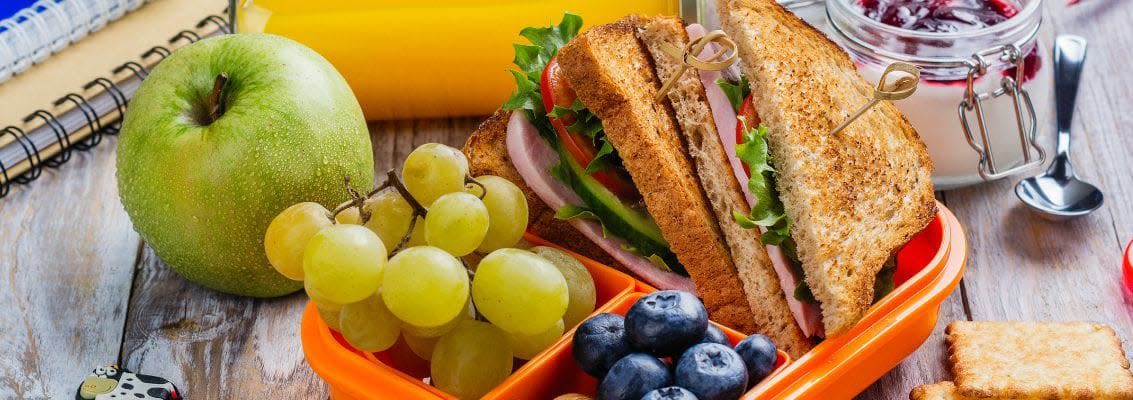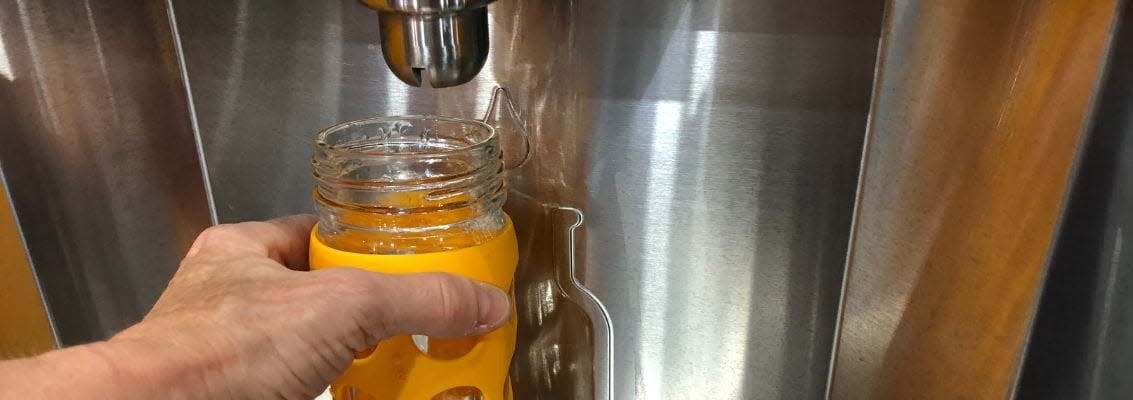Editor’s note: This article first published in the Fall issue of Beyond the Meeting Room, ALHI’s printed magazine.
No matter how health conscious you are, traveling can wreak havoc on your eating habits. Healthy eating can go out the window when you’re dealing with a canceled flight or barreling down a highway lined with fast food joints on a road trip.
It doesn’t have to be that way.
“One thing that’s important to consider is a little bit of advanced planning,” said Regina Vaicekonyte, M.S., Vice President of Delos Labs, a wellness solutions company.
The solutions include packing healthy fare when you can or, if you’ll be relying on restaurants, knowing your dining options ahead of time so you can choose wisely.
“If you know you are going to be in a specific area, look up menus,” she said. “Almost every restaurant has a digital menu uploaded.”
Here are more recommendations for eating healthy, no matter what your travel situation.
Plan ahead
It’s easier to eat healthy when you’ve brought a stash of healthy snacks. Vaicekonyte recommends packing fresh fruit that is easy to hold, such as apples, nectarines, bananas and pears; dried fruits such as dates or apricots with no added sugar; unsalted nuts, air-popped popcorn; and hummus with pre-cut veggies like cucumbers, baby carrots, bell peppers and celery. And don’t forget to bring high-fiber snacks, like almonds, to help you stay regular. “Easy-to-eat foods with fiber and a variety of micronutrients are great options when on the road,” said Vaicekonyte.

Pack a healthy lunch
It’s not always practical but if you’re going on a one-day trip, consider bringing a home-prepared lunch in a small cooler. If you can’t bring a cooler, pack sandwich ingredients that will keep, such as whole-grain bread or a whole-grain pita pocket with a filling like tuna salad in a flip top can. And don’t forget any needed utensils. Vaicekontye noted that’s a less messy option, especially when eating in a vehicle.
Make the most of fast-casual restaurants
“Many fast-casual restaurants have plenty of perfectly healthy menu options,” said Vaicekonyte. She recommends looking for items that have whole foods as main ingredients—such as avocado, spinach and egg white sandwiches, steel-cut oatmeal cups with whole fruit; Mediterranean veggie sandwiches; or grilled chicken/turkey breast sandwiches with whole grain bread, vegetable soups and grain bowls. “Keep in mind that what you’re trying to avoid is excess processed fat—such as deep-fried or cheese-heavy items—excess salt, processed grains and high amounts of sugar.”.
Watch out for pretenders
Foods that seem like they’re healthy can derail your diet while you’re traveling. “Salads with heavy dressings or simple carbohydrates (such as croutons or white bread), and foods with high amounts of cheese are some of the menu items that might seem healthy—but the high sugar and/or salt, processed grains/simple carbs, and large amounts of fat are what make them less healthy,” said Vaicekonyte. “Whenever possible, aim for healthier salad dressing options such as olive oil and/or balsamic vinaigrette, ask for light or no dressing, or have the dressing on the side and skip the white bread/croutons.”
Also be selective about soups, said Chelsea Powell, M.S., a registered dietitian (R.D.) in Milwaukee. “The sodium is often off the charts, and will leave you feeling puffy and heavy,” she said.
And read the ingredient list at the airport smoothie bar. “Although all fruit is good for you, most smoothies are made with fiberless fruit juices and added sugars, which can cause energy crashes and increase inflammation in your body,” said Powell. “Opt for fresh fruit that you bring with you, or can purchase at many cafes, airport lounges or grab-and-go counters throughout the airport.”
Know the best options for fast-food restaurants
You don’t have to leave a highway rest stop feeling like you’re living your personal version of “Super Size Me.”
“Many fast-food restaurants have responded to consumer demand for healthier menu items so it’s possible to find at least a few balanced meal options,” said Vaicekonyte. Her recommendations? Avoid deep fried items and go with grilled fish or chicken sandwiches; salad bowls with grilled or roasted protein and dressing on the side; make-your-own burrito bowls that give you full control over what to include; and thin crust veggie pizza in chains like Domino’s and Pizza Hut.
Powell said ask yourself: “How can I add something fresh or more colorful to my order? Oftentimes, it can be as simple as ordering an apple, fresh carrots or a steamed veggie instead of a side of bread or fries.”
And skip the side of fries. “The inflammatory oils and salt can make you feel heavy, tired and puffy,” she said.

Stay hydrated
“Don’t forget to bring a carry-on, reusable water bottle,” said Powell. “Hydration is a priority when traveling, especially in a dehydrating airplane. Water keeps your energy levels up and will help you feel refreshed when you arrive at your destination. Plus, proper hydration wards off junk food cravings for salt and sugar.”
What if you’d like a little flavor or sweetness? “There are a number of zero or low-sugar options such as naturally flavored sparkling water (such as Spindrift and La Croix), green tea-flavored or sparkling options are available with zero calories, water infused with vitamins or electrolytes (such as Vitamin Water Zero and Wtrmln SportWtr), coconut water and many others,” said Vaicekonyte.
Maple water and Olipop are her favorites. “Maple water contains prebiotics—food for your gut bacteria—and natural antioxidants, and Olipop has 9 grams of fiber, which helps to support your digestive system while on the road,” she said. “For a hint of flavor, you can also add a few pieces of fruit or vegetables to plain or sparkling water—such as watermelon, cucumber, orange or lemon.”
With a little forethought, you can enjoy frequent travel and good health at the same time.
ALHI has partnered with Delos, a leading wellness brand, to launch the Delos Wellness Certificate for Meetings & Events, designed to teach meeting professionals how to incorporate best practices for creating healthy, productive meeting experiences.